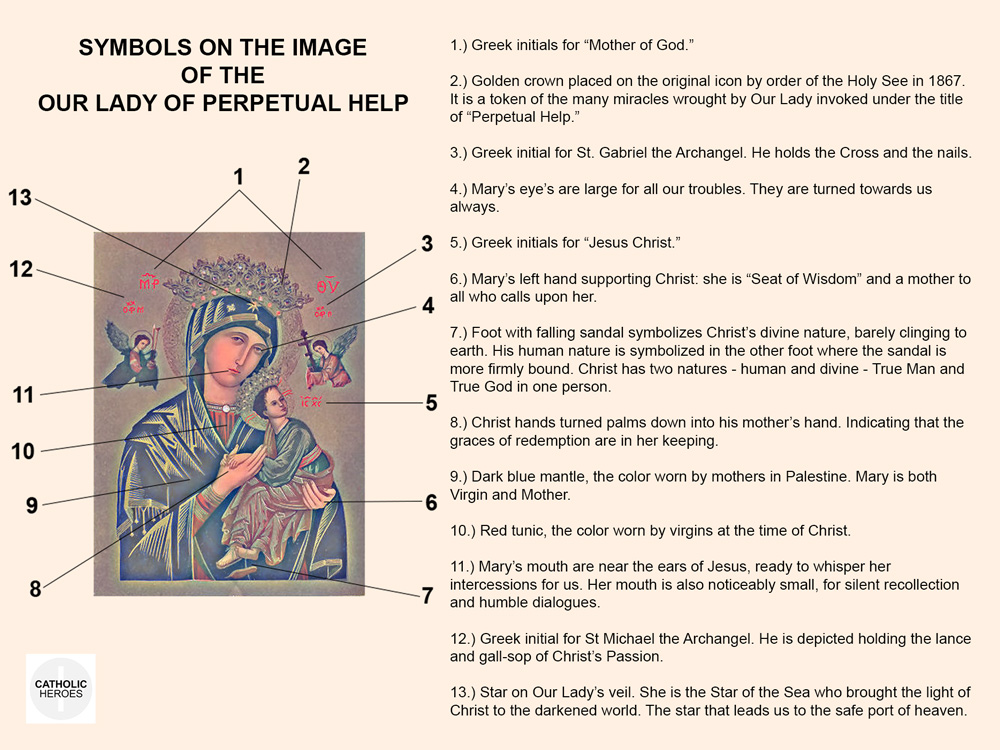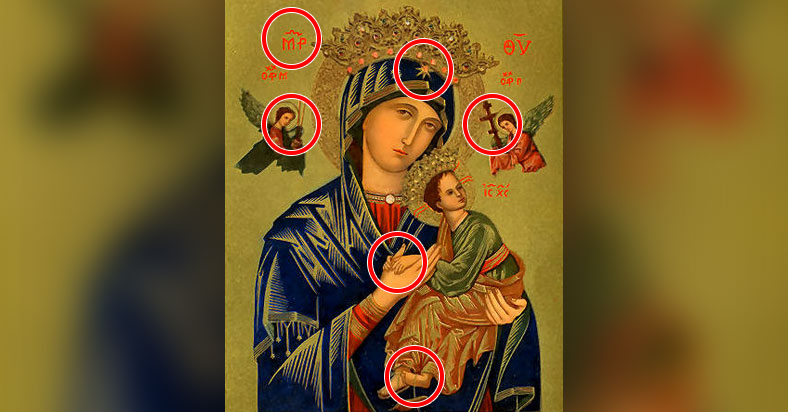Understanding the Symbols in the Icon of Our Lady of Perpetual Help
The icon of Our Lady of Perpetual Help, also known as Our Mother of Perpetual Succour, is one of the most venerated images in the Catholic tradition. Steeped in rich symbolism and history, this icon has been a source of comfort and inspiration for millions of faithful around the world.
Originating from the Byzantine tradition, the icon dates back to at least the 15th century and has been housed in the Church of St. Alphonsus Liguori in Rome since 1866. According to tradition, the icon was stolen from a church in Crete by a merchant who, after experiencing several miraculous events, handed it over to the church in Rome as per the instructions of the Virgin Mary herself, who appeared to him in a vision.
The devotion to Our Lady of Perpetual Help has been associated with countless miracles over the centuries. From healings and personal protection to deeper spiritual conversions, the icon is seen as a powerful intercessor and hope for those in distress.

From the image above, we will dive into the rich symbols embedded in the icon, each carrying a profound meaning and contributing to the overall message of divine compassion and maternal care. By understanding these symbols, we can deepen our appreciation for this sacred image and the powerful devotion it inspires:
- Greek initials for “Mother of God.”
- Golden crown placed on the original icon by order of the Holy See in 1867. It is a token of the many miracles wrought by Our Lady invoked under the title of “Perpetual Help.”
- Greek initial for St. Gabriel the Archangel. He holds the Cross and the nails.
- Mary’s eye’s are large for all our troubles. They are turned towards us always.
- Greek initials for “Jesus Christ.”
- Mary’s left hand supporting Christ: she is “Seat of Wisdom” and a mother to all who calls upon her.
- Foot with falling sandal symbolizes Christ’s divine nature, barely clinging to earth. His human nature is symbolized in the other foot where the sandal is more firmly bound. Christ has two natures – human and divine – True Man and True God in one person.
- Christ hands turned palms down into his mother’s hand. Indicating that the graces of redemption are in her keeping.
- Dark blue mantle, the color worn by mothers in Palestine. Mary is both Virgin and Mother.
- Red tunic, the color worn by virgins at the time of Christ.
- Mary’s mouth are near the ears of Jesus, ready to whisper her intercessions for us. Her mouth is also noticeably small, for silent recollection and humble dialogues.
- Greek initial for St Michael the Archangel. He is depicted holding the lance and gall-sop of Christ’s Passion.
- Star on Our Lady’s veil. She is the Star of the Sea who brought the light of Christ to the darkened world. The star that leads us to the safe port of heaven.
Facts about the image of Our Lady of Perpetual Help
Additionally, here are some fascinating trivia about the image and its history:
- June 27 is the feast day of Our Lady of Perpetual Help, celebrated for her miracles and answers to prayer.
- The icon is associated with a 15th-century Byzantine depiction of the Madonna and Child.
- After being stolen from a Cretan monastery by a wine merchant shortly after its creation, the icon was brought to the church of St. Matthew in Rome.
- The icon resided at St. Matthew’s for 300 years, surviving the church’s destruction by Napoleon’s army in 1798.
- Eighty-eight years later, Pope Pius IX entrusted the icon to the Redemptorist congregation at the Church of Saint Alphonsus, where it remains today.
- The original icon did not feature a crown; this was a later addition to honor the significance of the image.
These intriguing details not only highlight the icon’s storied past but also underscore its enduring spiritual impact and the deep reverence it commands among the faithful.




